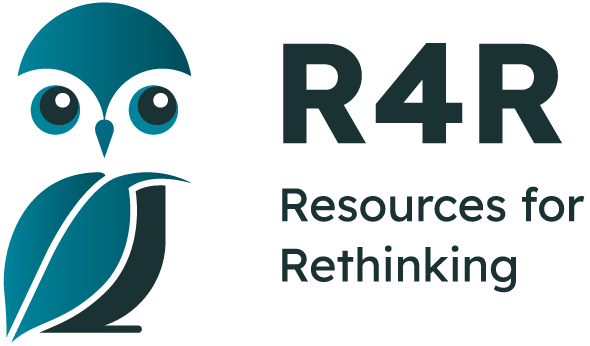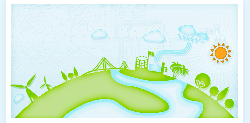- Home
- Tutorial
- Resource Guides
- Focus Areas
- LSF Programs
-
Professional
Development - Review Process
-
A project of LSF

Search for Resources
Description
This activity-based, ESD resource integrates sustainability issues into the teaching of engineering, technology and product design concepts. Students are asked to describe and evaluate the impacts of engineering on the environment and to reflect on their own feelings about these effects. Further, students suggest alternatives and solutions to the economic, social, and environmental impacts associated with the design, use, and disposal of everyday products. Two of the eight lessons focus on alternatives to carbon-based production.
Each lesson includes learning objectives, outcomes, activity descriptions and worksheets/ graphic organizers. Activities can be delivered as stand-alone lessons or collectively as a self-contained unit. Click on the links below to access the individual lesson plans.
This practical activity, which encourages discussion and value clarification, helps students identify their current beliefs about engineering and its importance in the world. Belief cards are included.
An eco-design tool is used to evaluate and compare everyday products against agreed upon sustainability criteria. Students examine information and group/ class discussions follow.
Students examine how engineers and designers balance different specifications when developing new products, including sustainability specifications. Groups prioritize criteria cards that examine key issues like the use of local materials, fair trade, and energy minimization.
Students participate in an activity which asks them to explore, at a basic level, the social, economic and environmental impacts of the production, use, and disposal of everyday products. After examining these products, with regards to buying, using, and disposing, students discuss and debate the sustainability issues associated with each part of their life cycle.
The purpose of this lesson is to increase the knowledge and understanding of different types of renewable energy sources available in different parts of the world. Students consider the variety of energy options available to four communities on fictitious Moja Island and select the most appropriate technology to meet their needs. Renewable energy cards, a map and important information about the needs of each community on the island are included.
Students are asked to consider using the 6Rs (reduce, reuse, refuse, rethink, repair, recycle) as a means of re-thinking the way in which products are manufactured and used so as to avoid running out of material and energy sources in the future. Students develop definitions for the 6Rs and identify products which illustrate the 6R's in action.
As a follow up to Lesson Three, students are asked to describe and evaluate the environmental impacts of an engineered product throughout the life cycle. They then are asked to suggest innovative ways in which these impacts could be reduced at each stage (source materials, production, distribution, marketing , use, and disposal). It is suggested that a CD pack be purchased to guide the lesson.
Students look at how the manufacture, use, and disposal of a product have different impacts on different groups of people- sometimes positive, sometimes negative. Students learn that their own product choices have far-reaching effects socially, economically, politically and environmentally.
General Assessment
What skills does this resource explicitly teach?
- Building consensus
- Critical and creative thinking strategies
- Using an eco-tool to evaluate a product
- Problem solving and decision making strategies
- Working cooperatively with group members
- Proposing solutions to a given problem
Strengths
- Addresses learning outcomes in technology education and design courses
- An important, up to date topic
- Group work allows for shared dialogue and incidental peer teaching
- Provides different ways to collect and analyze information- energy cards, mind maps, belief cards, eco-design tool, unique graphic organizers, kin-aesthetic activities
- Case studies promote empathy
- Allows students to clarify and express values, beliefs, and attitudes
- Open-ended solutions and creative thinking are encouraged
- Demonstrates the complexity of sustainability issues
Weaknesses
- Little background material provided for teachers and students
- No authentic action project
- No accommodations suggested for struggling learners
- No assessment tools are provided
- Few direct links to related information
Recommendation of how and where to use it
This resource could be used to to address outcomes or supplement core materials used in technological education or design courses. Some activities could also be used in a science classroom studying electricity and renewable energy options.
Relevant Curriculum Units
The following tool will allow you to explore the relevant curriculum matches for this resource. To start, select a province listed below.
- Step 1Select a province
- Alberta
- Step 2Select a grade level
- Grade 9
- Step 3Select a subject
- Science
- Step 4Relevant matches
- Electrical Principles and Technologies
- Knowledge and Employability Science: Electrical Principles and Technologies (Science and Technology Emphasis)
- Grade 10
- Step 3Select a subject
- Science
- Step 4Relevant matches
- Science 10-4 (Knowledge and Employability Science): Investigating Matter and Energy in Environmental Systems
- Science 10: Energy Flow in Technological Systems
- Science 14:Investigating Matter and Energy in the Environment
- British Columbia
- Manitoba
- Step 2Select a grade level
- Grade 9
- Step 3Select a subject
- Science
- Step 4Relevant matches
- Energy
- Senior 1 Science: Nature of Electricity
- Technological Education
- Step 4Relevant matches
- Exploration of Sustainable Energy: Awareness of Sustainability
- Exploration of Sustainable Energy: Cross Curricular
- Grade 10
- Step 3Select a subject
- Science
- Step 4Relevant matches
- Life Systems
- Technological Education
- Step 4Relevant matches
- Introduction to Sustainable Energy: Cross Curriular
- Introduction to Sustainable Energy: Promotion and Planning
- Introduction to Sustainable Energy:Awareness of Sustainability
- New Brunswick
- Newfoundland & Labrador
- Step 2Select a grade level
- Grade 9
- Step 3Select a subject
- Science
- Step 4Relevant matches
- Electricity
- Technological Education
- Step 4Relevant matches
- Energy and Power Technology: Big Ideas
- Energy and Power Technology: Design Activity
- Grade 10
- Step 3Select a subject
- Science
- Step 4Relevant matches
- Science 1206: Sustainability of Ecosystems
- Grade 11
- Step 3Select a subject
- Science
- Step 4Relevant matches
- Science 2200: Ecosytems
- Northwest Territories
- Nova Scotia
- Step 2Select a grade level
- Grade 9
- Step 3Select a subject
- Science
- Step 4Relevant matches
- Science 9: Characteristics of Electricity
- Grade 10
- Step 3Select a subject
- Geography
- Step 4Relevant matches
- Geography 10: Spaceship Earth
- Science
- Step 4Relevant matches
- Science 10: Sustainability of Ecosystems
- Technological Education
- Step 4Relevant matches
- Exploring Technology 10: Engineering Technology
- Exploring Technology 10: Green Technology
- Nunavut
- Step 2Select a grade level
- Grade 9
- Step 3Select a subject
- Science
- Step 4Relevant matches
- Electrical Principles and Technologies
- Knowledge and Employability Science: Electrical Principles and Technologies (Science and Technology Emphasis)
- Grade 10
- Step 3Select a subject
- Science
- Step 4Relevant matches
- Science 10-4 (Knowledge and Employability Science): Investigating Matter and Energy in Environmental Systems
- Science 10: Energy Flow in Technological Systems
- Ontario
- Step 2Select a grade level
- Grade 7
- Step 3Select a subject
- Geography
- Step 4Relevant matches
- Natural Resources around the World: Use and Sustainability
- Science & Technology
- Step 4Relevant matches
- Structures and Mechanisms: Form, Function, and Design of Structures
- Grade 8
- Step 3Select a subject
- Science & Technology
- Step 4Relevant matches
- Structures and Mechanisms: Systems in Action
- Grade 9
- Grade 10
- Step 3Select a subject
- Technological Education
- Step 4Relevant matches
- Construction Technolgy (Open) Technology, the Environment, and Society
- Green Industries (Open) The Environment and Society
- Green Industries (Open) Skills
- Prince Edward Island
- Step 2Select a grade level
- Grade 7
- Step 3Select a subject
- Technological Education
- Step 4Relevant matches
- Intermediate Industrial Technology Education: Technological Problem Solving
- Grade 8
- Step 3Select a subject
- Technological Education
- Step 4Relevant matches
- Intermediate Industrial Technology Education: Technological Problem Solving
- Quebec
- Step 2Select a grade level
- Grade 7
- Step 3Select a subject
- Science & Technology
- Step 4Relevant matches
- The Technological World
- Grade 8
- Step 3Select a subject
- Science & Technology
- Step 4Relevant matches
- The Technological World
- Grade 10
- Step 3Select a subject
- Science & Technology
- Step 4Relevant matches
- Applied Science & Technology:The Technological World
- Environmental Science & Technology: The Technological World
- Science & Technology: The Technological World
- Saskatchewan
- Yukon Territory
Themes Addressed
Citizenship (1)
- Sustainable Consumption
Economics (1)
- Corporate Social Responsibility
Energy (3)
- Alternative Energy
- Energy Generation
- Energy Use
Waste Management (3)
- Cradle-to-Cradle
- Rethink, Reduce, Reuse, Recycle
- Source Reduction
Sustainability Education Principles
| Principle | Rating | Explanation |
|---|---|---|
| Consideration of Alternative Perspectives | Good | Students participate in a variety of activities to gather information on the sustainability of everyday products. They are encouraged to reflect on their own values, and make their own conclusions. Belief cards support a wide range of perspectives. |
Consideration of Alternative Perspectives:
| ||
| Multiple Dimensions of Problems & Solutions | Good | |
| Multiple Dimensions of Problems & Solutions: Effectively addresses the environmental, economic and social dimensions of the issue(s) being explored.
| ||
| Respects Complexity | Good | The resource promotes dialogue and discussion within groups of students and encourages creative, open-ended solutions. |
| Respects Complexity: The complexity of the problems/issues being discussed is respected. | ||
| Acting on Learning | Poor/Not considered | The resource does not include an action experience. |
| Acting on Learning: Learning moves from understanding issues to working towards positive change — in personal lifestyle, in school, in the community, or for the planet
| ||
| Values Education | Very Good | |
| Values Education: Students are explicitly provided with opportunities to identify, clarify and express their own beliefs/values. | ||
| Empathy & Respect for Humans | Good | Case studies build empathy for people in parts of the developing world who struggle with getting access to electricity. |
| Empathy & Respect for Humans: Empathy and respect are fostered for diverse groups of humans (including different genders, ethnic groups, sexual preferences, etc.). | ||
| Personal Affinity with Earth | Good | Although the resource has no out-of-doors experience, students do examine the environmental impacts of everyday products and in the production of energy using non-renewable sources. |
| Personal Affinity with Earth: Encourages a personal affinity with -the natural world.
| ||
| Locally-Focused Learning | Good | Students examine how their own product choices have global impacts socially, environmentally, and socially. |
| Locally-Focused Learning: Includes learning experiences that take advantage of issues/elements within the local community.
| ||
| Past, Present & Future | Satisfactory | Present day products are evaluated and analyzed, and students are asked to play a role in making recommendations for possible solutions to problems related to sustainability. |
| Past, Present & Future: Promotes an understanding of the past, a sense of the present, and a positive vision for the future. | ||
Pedagogical Approaches
| Principle | Rating | Explanation |
|---|---|---|
| Open-Ended Instruction | Very Good | |
| Open-Ended Instruction
: Lessons are structured so that multiple/complex answers are possible; students are not steered toward one 'right' answer. | ||
| Integrated Learning | Good | This is primarily a technology education resource, but there opportunities for addressing outcomes in science, geography, social studies and language arts. |
| Integrated Learning: Learning brings together content and skills from more than one subject area
| ||
| Inquiry Learning | Satisfactory | |
| Inquiry Learning: Learning is directed by questions, problems, or challenges that students work to address.
| ||
| Differentiated Instruction | Satisfactory | Both affective and cognitive domains are addressed. Appropriate grouping should help address issues of differences in intelligences. There are no accommodations suggested for struggling learners. |
| Differentiated Instruction: Activities address a range of student learning styles, abilities and readiness.
| ||
| Experiential Learning | Satisfactory | |
| Experiential Learning: Authentic learning experiences are provided
| ||
| Cooperative Learning | Satisfactory | |
| Cooperative Learning: Group and cooperative learning strategies are a priority.
| ||
| Assessment & Evaluation | Poor/Not considered | No tools are provided for formative or summative assessment. Teachers must develop their own strategies. |
| Assessment & Evaluation: Tools are provided that help students and teachers to capture formative and summative information about students' learning and performance. These tools may include reflection questions, checklists, rubrics, etc. | ||
| Peer Teaching | Satisfactory | |
| Peer Teaching: Provides opportunities for students to actively present their knowledge and skills to peers and/or act as teachers and mentors.
| ||
| Case Studies | Good | |
| Case Studies: Relevant case studies are included. Case studies are thorough descriptions of real events from real situations that students use to explore concepts in an authentic context. | ||
| Locus of Control | Satisfactory | Students do get opportunities to choose some elements of the program. |
| Locus of Control: Meaningful opportunities are provided for students to choose elements of program content, the medium in which they wish to work, and/or to go deeper into a chosen issue. | ||

